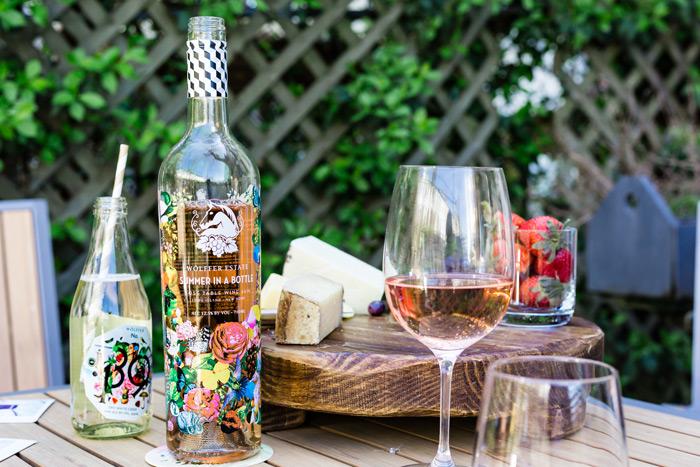A Rite of Spring: Long Island Rosé Is Back

Back in mid-March, there was still that winter chill in the air, the sky was a slate gray and the threat of snow lingered on. Hints of spring were few, and summer seemed a distant memory.
Then, just when things were at their bleakest, it happened. That is, the spring wine club distribution arrived, and included with it, in all of its pink glory, was a bottle of newly released 2015 Long Island rosé. At last, here it was. A bottle containing the promise of spring and the taste of summer—ready to simply chill and serve.
This writer was not the only one to attach such significance to the first rosé of the season. For a growing number of East Enders, the release of the new Long Island rosés has become a rite of spring, to be anticipated as much as the daffodils or the return of the songbirds.
Of course, the difference between daffodils and songbirds vs. Long Island rosé is that you can drink Long Island rosé. And drink it people do, in ever-growing numbers and in ever-increasing amounts. In the last few years, Long Island rosé has become the favorite seasonal drink for locals and visitors alike. It’s so popular that it basically sells out by the end of summer.
“It’s become one of the essential things people need for their Hamptons parties,” says Roman Roth, winemaker and partner at Wölffer Estate Vineyard in Sagaponack. “It’s part of the lifestyle out here now.” Roth produced the very first Long Island rosé over 20 years ago, and finds great satisfaction in the growing popularity of rosé on the East End.
The number of wineries producing rosé on the East End keeps going up, and the quality of the wine produced is excellent. These rosés aren’t just for wetting the whistles of thirsty Hamptons revelers—they get serious attention from connoisseurs as well.
Wölffer produces three varieties of rosé on Long Island. The first to be released is the standard dry rosé, which arrived this year in late February. A lot of this is reserved for sale on the East End—which is good, because otherwise it would be gone a lot sooner.
“We released 10,000 cases to our distributor in the city, and it sells out in 2 or 3 days,” says Roth. “We have to allocate the rest of it to the East End to keep up with local demand.”
Following the standard rosé from Wölffer comes Summer in a Bottle, a fruitier but still complex rosé. It comes in a festive bottle decorated with pictures of flowers and topped with Wölffer’s distinctive checkerboard capsule (shown at right). Then comes the Grandioso, an elegant, barrel-aged rosé.
“We expect them to all be gone by around Labor Day,” says Roth.
Christopher Tracy, partner and winemaker at Channing Daughters Winery in Bridgehampton, reports similarly high demand for Channing Daughters’ 2015 rosatos (that’s what they call their rosés). “They’re flying—people are digging them,” says Tracy. They’ve made six varieties of rosato amounting to around 5,000 cases, which Tracy expects to last through the summer. “The popularity keeps surging, not just locally but regionally and even internationally. From a business perspective it would be nice to be able to produce more, but selling out of it is a great problem to have, really.”
While it would be more lucrative for the local vineyards if they could produce enough rosé to maintain year-round availability, and it might be nice for wine lovers to be able to grab a bottle of it anytime, that’s not likely to happen. And that’s good. After all, isn’t there something charming and old-world about the East End being known for a type of wine, especially a delicious wine that people have to wait for and that’s only around for a little while?
At Croteaux Vineyards in Southold, they encourage the old-world comparison, likening the East End to Provence, the seaside wine region in France noted for its fine rosés. Croteaux produces only rosés, which are lapped up almost as soon as they’re released.
All too soon, it will be back to short days, cold nights, and the waiting for next year’s batch of rosés. So enjoy these 2015 Long Island rosés while you can, because, like summer itself, they won’t last.



